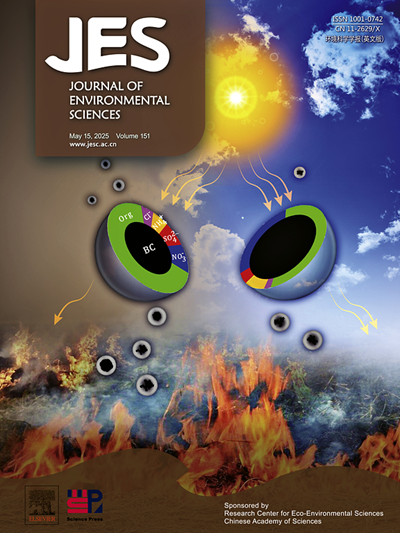Immunosuppressive role of benzo[a]pyrene exposure in prostate cancer progression
IF 5.9
2区 环境科学与生态学
Q1 ENVIRONMENTAL SCIENCES
引用次数: 0
Abstract
Epidemiological studies indicate that prostate cancer (PCa) is the second prevalent malignant tumor affecting men globally. Environmental pollution such as cigarette smoke is one of the important risk factors for the development of prostate cancer. However, as one of the main carcinogens in cigarette smoke, the role of benzo[a]pyrene (BaP) in prostate cancer is still unclear. The current study aimed to investgate the impacts of BaP exposure on the progression of PCa toward malignancy and the regulation of the immune microenvironment. We verified that BaP exposure can promote the proliferation, migration, and apoptosis of prostate cancer cells through in vitro experiments. We constructed a subcutaneous xenograft tumor model of BaP exposure mouse and found that can promote the proliferation of tumors in vivo. Organoids-driven by PCa patients showed higher growth rate under BaP exposure. Flow cytometric analysis demonstrated a remarkable decrease in CD4+ T and CD8+ T cell infiltration levels. Moreover, we identified four genes (Mdm2, Ar, Foxo1, Crebbp) were strongly associated with BaP exposure by combining mouse tumor RNA-seq and CTD database. Additionally, a nomogram integrating clinicopathological features was constructed to assess the prognosis of prostate cancer patients under BaP exposure. This study systematically proved that BaP exposure promotes malignant progression of PCa and suppresses the immune microenvironment, in which Mdm2, Ar, Foxo1, Crebbp may play a crucial role in inhibiting apoptosis. These findings offer novel insights into the mechanisms via which BaP exposure contributes to PCa development.

苯并[a]芘暴露在前列腺癌进展中的免疫抑制作用
流行病学研究表明,前列腺癌是影响全球男性的第二大流行恶性肿瘤。吸烟等环境污染是前列腺癌发生的重要危险因素之一。然而,作为香烟烟雾中的主要致癌物之一,苯并[a]芘(BaP)在前列腺癌中的作用尚不清楚。本研究旨在探讨BaP暴露对前列腺癌恶性发展的影响及其对免疫微环境的调节作用。我们通过体外实验证实BaP暴露可促进前列腺癌细胞的增殖、迁移和凋亡。我们构建了BaP暴露小鼠皮下异种移植瘤模型,发现BaP在体内可促进肿瘤的增殖。前列腺癌患者驱动的类器官在BaP暴露下表现出更高的生长速率。流式细胞术分析显示CD4+ T和CD8+ T细胞浸润水平显著降低。此外,通过结合小鼠肿瘤RNA-seq和CTD数据库,我们发现了四个基因(Mdm2, Ar, Foxo1, Crebbp)与BaP暴露密切相关。此外,我们还构建了一个综合临床病理特征的nomogram来评估前列腺癌患者在BaP暴露下的预后。本研究系统证明BaP暴露促进前列腺癌恶性进展,抑制免疫微环境,其中Mdm2、Ar、Foxo1、Crebbp可能在抑制细胞凋亡中发挥关键作用。这些发现为BaP暴露促进PCa发展的机制提供了新的见解。
本文章由计算机程序翻译,如有差异,请以英文原文为准。
求助全文
约1分钟内获得全文
求助全文
来源期刊

Journal of Environmental Sciences-china
环境科学-环境科学
CiteScore
13.70
自引率
0.00%
发文量
6354
审稿时长
2.6 months
期刊介绍:
The Journal of Environmental Sciences is an international journal started in 1989. The journal is devoted to publish original, peer-reviewed research papers on main aspects of environmental sciences, such as environmental chemistry, environmental biology, ecology, geosciences and environmental physics. Appropriate subjects include basic and applied research on atmospheric, terrestrial and aquatic environments, pollution control and abatement technology, conservation of natural resources, environmental health and toxicology. Announcements of international environmental science meetings and other recent information are also included.
 求助内容:
求助内容: 应助结果提醒方式:
应助结果提醒方式:


